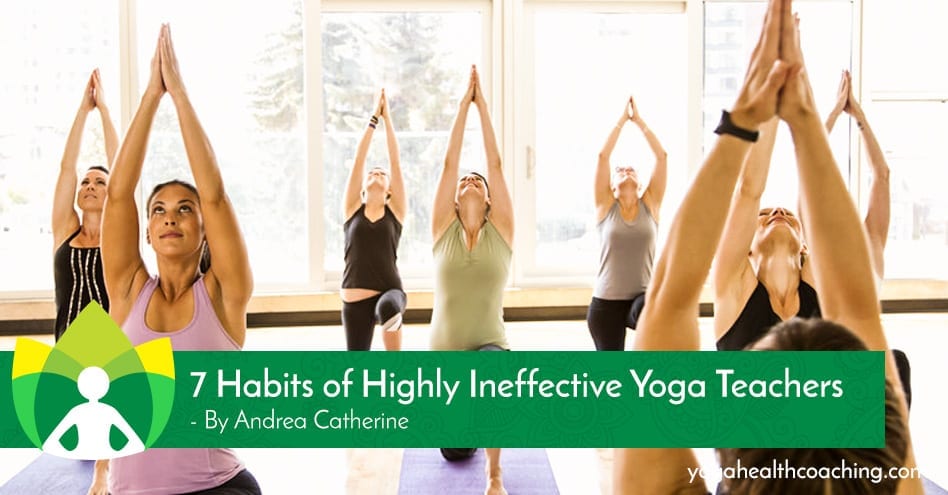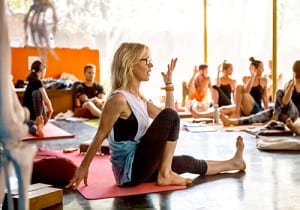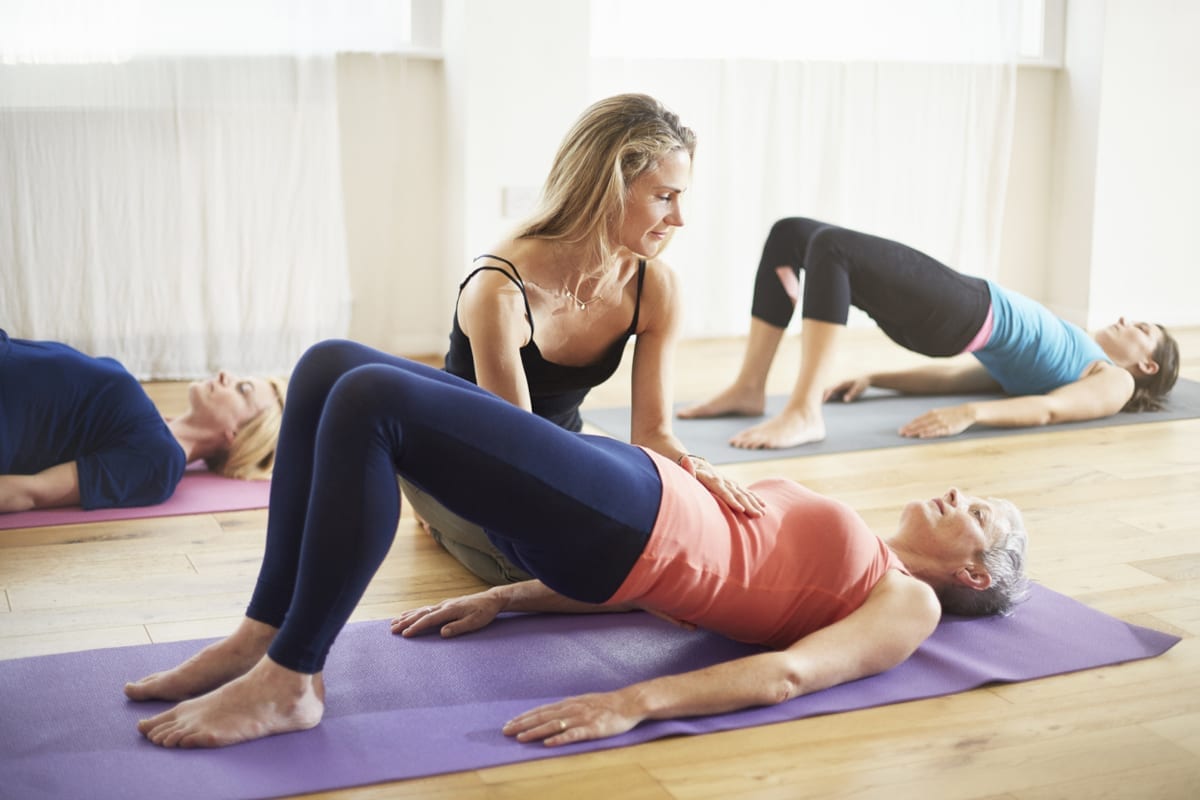
7 Habits of Highly Ineffective Yoga Teachers
Hat-tip to Stephen R. Covey, author of The 7 Habits of Highly Effective People
Here is my list of habits that I aspire to avoid as a yoga teacher. I’ve done them all! If you are a yoga teacher you likely have, too. If not, share your secrets.
#1 Turn Your Back to the Students.
Your class is about to commence. Turn to face the front of the room with your back to the yogis. Plug in your music, you’ve assumed your optimal position. You won’t get lured in by their intense eye contact. Because you can’t see your students, you won’t have to worry if they’ve understood how to safely do the pose you’ve demonstrated. Just keep going with your flow, looking everywhere but into the crowd. Assume they’re on target, following right along. When you turn to face your students, you get caught up trying to recall right and left and trying to mirror them. It’s easier if you just turn around. That way you relieve all confusion, at least for you. Plus, seeing you looking at them, can be intimidating, anyway. They get the opportunity to ease up, you get to stay in your own little world. Win-Win.
#2 Shout Over Your Yoga Jams.
When you have to exert more energy to talk, the students have to exert more energy to listen. You’re heart rate will go up and you’ll sound like you’re working hard, even if you’re just talking and not doing the asana. If they think you’re working hard, they’ll amp it up, too.

#3 Just Keep Talking!
You’re non-stop chatter eliminates the students’ opportunity to think about anything other than what you are saying. Students experiencing Yoga Chitti Vriitti Nirodaha (cessation of the fluctuations of the mind) depends on you! They have no choice, but to be totally present and focus on you and what you want them to do. It’s really amazing how this will work in your favor to get everyone doing what you want, rather than creating their own sequence.
#4 Don’t Stop the Class To Demonstrate A New Asana.
This really messes up the flow and the vibe of the class. Keep going, even if it means you are out of alignment because you are trying to watch all the students while you show them. That’s why you barter Yoga lessons with a massage therapist; she’ll fix you up.
#5 Do You Whole Practice With the Students.
If you practice before class, then when you demonstrate a new posture you’re totally warmed up, and you make it look too easy. You put yourself on a pedestal, which obliterates, rather than enhances your connection with the students. If you do your practice with them, they see you struggling and feel more comfortable trying the postures, too. Bonus: You save at least 1 hour each day you teach to do what you want to do instead of get on your own mat!
#6 Stick To Your Plan.
Have a notebook with a minute-by-minute outline. That way you have no chance of getting distracted by what students may actually need to practice that day. You avoid having to trouble-shoot, and you don’t have time to give them feedback or adjustments because you’ll need to keep your nose in your notebook. It’s a safe way to ensure you won’t cause injury by suggesting a modification or offering hands-on-adjustment that doesn’t work for the student.
#7 Don’t Credit Your Teachers, You Know It All!
Embrace the wisdom you have acquired. Yoga is all about taking your practice, your life to heart. It doesn’t matter what you learned from where, you’re a unique being and if you bring in teachings from others, you lose your own Validity.
Throw Away Your Megaphone
Ok, seriously. We’ve all done at least one of these. This post isn’t about poking fun at Yoga Teachers who are doing many of these in order to name them as BAD. and those who aren’t, as inherently good. Since I began teaching yoga, 6 years ago, I’ve become keenly aware the atmosphere in which I thrive as a yoga student. I consider it a treat to attend another teacher’s class, and used to grow extremely disappointed if I saw several of The Seven Habits of Highly Ineffective Yoga Teachers informing their instruction. It would become difficult for me to feel fulfilled in my practice and I would leave feeling like I’d wasted my time and frustrated that there were so few teachers I could go to and leave inspired or challenged or attended to.

Become an Inspirational Yoga Teacher
Now, I don’t feel that way. I know I am responsible for my own experience. I am grateful my knowledge and experience of yoga give me some ground to stand on when I show up in a class that doesn’t acknowledge me, or my needs, and in which the teacher shows up unprepared for what’s before her. That said, I feel most at ease, impressed, inspired and challenged up-level my own teaching when the teacher does the following:

- Makes eye contact with her students and acknowledges each one throughout the class
- Manages light, sound, and other sensory influences students may be sensitive to, so that the environment feels easy to land in, comfortable, and serene
- Says what is necessary, and shares some of her story, but leaves plenty of time for silent integration
- Pauses the class and invites students to surround her, or another student, who will demonstrate the next pose with their full attention on that new posture before attempting it themselves
- Arrives in her body, having met her own needs, and can spend the hour plus with the students with her attention on them!
- Has a plan, and maintains flexibility. She notices, or asks, about students needs and incorporates a language and asana to meet them where they are
- Brings in a teaching that has impacted her and acknowledges her own path of learning as continual and lifelong
As you prepare your next class, you might choose to experiment with one of these habits and see how it challenges, inspires and transforms not only your teaching, but your connection with the students and their experience as well.


